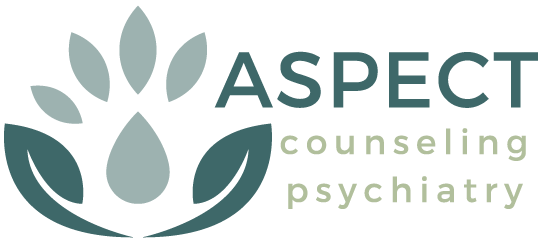What does CBT stand for?
CBT stands for Cognitive Behavioral Therapy, a type of behavioral therapy that involves identifying and challenging negative thoughts and beliefs, and replacing them with more realistic and balanced ones.
What is Cognitive Behavioral Therapy (CBT)?
Cognitive Behavioral Therapy (CBT) is a type of psychotherapy that focuses on identifying and changing negative or distorted thought patterns and behaviors. The goal is to help individuals develop healthier thinking patterns and coping strategies to improve emotional regulation and address specific psychological issues.
CBT is often used to treat a variety of conditions, including depression, anxiety, stress, and phobias. It is typically a short-term, structured therapy that involves:
1. Identifying Negative Thoughts
Recognizing harmful or unrealistic beliefs that affect emotions and behaviors
2. Challenging These Thoughts
Evaluating the evidence for and against these thoughts to determine if they are accurate or helpful
3. Changing Behaviors
Developing new, healthier behaviors and coping strategies that align with more realistic and balanced thoughts
CBT is often considered practical and goal-oriented, focusing on current problems rather than delving deeply into past experiences. It can be done individually or in groups and is sometimes combined with other treatments, such as medication.
CBT Therapists
Cognitive Behavioral Therapy (CBT) therapists differ from other types of therapists in several key ways, particularly in their approach to treatment, techniques, and goals. Here’s how CBT therapists stand out:
Focus on Thoughts & Behaviors
CBT therapists focus on the connection between thoughts, feelings, and behaviors. They work with clients to identify and challenge negative or distorted thoughts and help them develop healthier, more realistic thinking patterns. They also work on modifying behaviors that are contributing to the person’s distress.
Structured, Goal-Oriented Approach
CBT therapists tend to use a structured, problem-solving approach that is often more time-limited and goal-focused. Therapy sessions usually involve specific assignments or exercises to practice between sessions, such as journaling or thought records, to apply new skills.
Present-Focused & Solution-Oriented
CBT therapists primarily work with clients on current issues and challenges. While some background or past events might be explored to understand the roots of certain issues, CBT is generally focused on solutions and improving the present.
Short-Term & Practical
CBT therapists often provide short-term therapy, typically ranging from a few weeks to several months, depending on the severity of the problem. It’s usually a more practical, hands-on approach to treatment.
Use of Homework & Techniques
CBT therapists frequently assign homework to clients, such as practicing new behaviors, keeping track of thoughts, or engaging in specific exercises aimed at modifying thought patterns and behaviors. Techniques like cognitive restructuring, mindfulness, and exposure therapy might be employed.
Active, Collaborative Role
CBT therapists tend to take an active, collaborative role in therapy. They often work alongside clients to identify problems, set goals, and track progress.
Overall, CBT therapists are distinguished by their focus on the relationship between thoughts, emotions, and behaviors, their structured and goal-oriented techniques, and their emphasis on empowering clients to make tangible changes in their thinking and behavior. Other therapists might take a more exploratory, insight-based approach, with varying degrees of structure and focus on past experiences.
Types of CBT
There are several different types of Cognitive Behavioral Therapy (CBT) that vary based on the techniques and approaches used. These types share the core principle of CBT—focusing on changing negative thought patterns and behaviors—but each has its own emphasis or method. Here are some of the key types:
Traditional Cognitive Behavioral Therapy (CBT)
Focus
The classic type of CBT involves identifying and challenging negative thoughts and beliefs, replacing them with more realistic and balanced ones. It combines cognitive restructuring with behavior modification techniques.
Techniques
Thought records, cognitive restructuring, behavioral experiments, exposure exercises, and problem-solving.
Dialectical Behavior Therapy (DBT)
Focus
Developed by Marsha Linehan, DBT is a type of CBT specifically designed to treat individuals with borderline personality disorder (BPD), but it has since been adapted for other conditions. It focuses on teaching skills to manage emotions, tolerate distress, improve interpersonal relationships, and practice mindfulness.
Techniques
Mindfulness, distress tolerance, emotional regulation, and interpersonal effectiveness skills.
Acceptance and Commitment Therapy (ACT)
Focus
ACT combines aspects of CBT with mindfulness strategies. It emphasizes accepting thoughts and feelings without judgment, living in alignment with personal values, and committing to behaviors that promote well-being, even in the presence of difficult emotions.
Techniques
Cognitive defusion (detaching from thoughts), mindfulness, acceptance, and values-based action.
Mindfulness-Based Cognitive Therapy (MBCT)
Focus
MBCT blends traditional CBT techniques with mindfulness practices. It was developed to prevent the relapse of depression, particularly for those who have experienced multiple episodes. The goal is to increase awareness of thoughts and feelings in the present moment and to prevent individuals from ruminating on negative thoughts.
Techniques
Mindfulness meditation, body scanning, and cognitive restructuring to interrupt negative thinking patterns.
Behavioral Activation (BA)
Focus
Behavioral Activation is a more focused form of CBT primarily used to treat depression. It helps individuals identify and increase engagement in activities that bring a sense of accomplishment or pleasure, breaking the cycle of avoidance and inactivity that contributes to depression.
Techniques
Activity scheduling, identifying reinforcing behaviors, and reinforcing positive activities.
Exposure Therapy
Focus
Exposure therapy is a type of CBT that specifically targets anxiety, phobias, and post-traumatic stress. It involves gradual exposure to feared situations or objects in a controlled manner to reduce avoidance behavior and desensitize the person to anxiety-triggering stimuli.
Techniques
Gradual exposure, systematic desensitization, and virtual reality exposure (in some cases).
Compassion-Focused Therapy (CFT)
Focus
CFT combines CBT with principles of mindfulness and compassion, aiming to reduce self-criticism and increase self-compassion. It is particularly useful for people struggling with shame, guilt, and low self-esteem.
Techniques
Compassionate imagery, self-compassion exercises, and mindfulness practices.
Each type of CBT is tailored to address specific mental health concerns and goals, utilizing various strategies to help individuals modify their thoughts, behaviors, and emotional responses. While the core principles remain consistent, the techniques and interventions used may vary depending on the type of behavioral therapy and the client’s needs.
